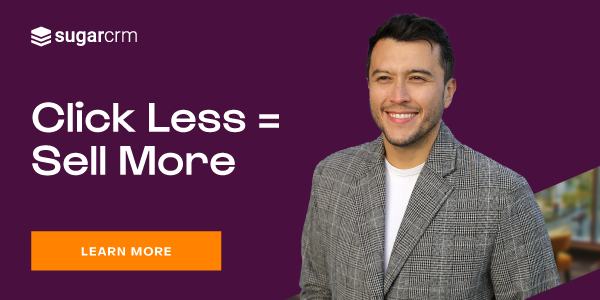How do you go about deciding which sales strategy could work given the nuances of your sector? A good start is by having an understanding of what others are doing.
The blueprint for sales success in an enterprise company is unlikely to work for small business. Likewise, sales strategies for highly regulated industries such as healthcare and financial service are unlikely to work for retail.
Opinions (and input) from external parties who have industry experience, matter. Your direct competitors might be well positioned to locate the missing pieces to the puzzle but the chances in having a competitor share sensitive information, is highly unlikely and more importantly anti-competitive.
‘Trial and error’ is an option adopted by many, although the opportunity cost of fixing an error or pivoting in a reactive manner, is high once you’ve committed time and resources to achieve plan A. Sometimes, there is no turning back or a suitable plan B.
When formulating or choosing a strategy, using quantitative data will help to realign emotion and intuition reducing the need of navigating blindly and relying on guesswork. If your ‘gut feel’ is right at least 51% of the time (technically a majority win), the expected value from a coin toss will only deliver hope rather than certainty.
The global State of Sales 2020 report, conducted between 13 May to 30 June 2020, surveyed 5,951 full-time sales professionals across Asia Pacific, North America, Europe, Africa and the Middle East and – all respondents were third-party panelists (not limited to Salesforce customers).
The top four sales tactics for success over the next 12 months were:
1. Increased flexibility with customers
2. Improved data quality and accessibility
3. Simplified sales processes
4. Personalised outreach
Why is each strategy important and how sales leaders can do it better?

4. Personalising Outreach
Authored by Jo Schonheim, Head of Sales and Marketing of True Sydney.
By (my) definition, personalising outreach refers to the tailoring of targeted outbound marketing. It can be personalised either to the individual recipient or organisation, and in a myriad of ways. Either addressing something about the recipient (their name, their role, a personal attribute), the company or industry they’re in. Mission critical, it includes something specifically of value to them: an industry insight, a personalised offer or CTA (Call to Action).
The intention is to demonstrate empathy; so the recipient feels seen and understood. Two of the most important things us mere mortals crave. This is powerful in forging foundations of rapport and connection.
It’s important as the more personalised it is, the more likely it is to resonate. The more powerfully it resonates, the more likely it is to have impact and elicit an emotional response in a prospect. Afterall, emotion drives behaviour. And behaviour drives action.
It’s also rare, meaning it stands out and cuts through the noise.
Can you remember receiving a personalised piece of Marketing?
What was your reaction?
What was your opinion of the organisation after reading it?
Did you sit up and pay more attention?
I’m guessing worst case, you lingered over it longer then you normally would, before fast filing it? And best case, it sparked enough curiosity causing you to act on the CTA, and click through? Am I right?
All great outbound marketing shouldn’t be to try and SELL. And by great, I mean effective. It should be to pique enough CURIOSITY to move prospects to the NEXT STEP (through the CTA).
How Can Sales Leaders Can Do It Better?
1. Less is more. Like time with family, it’s Quality over Quantity.
Gone are the days of “it’s a numbers game”. Volume is for spam.
And there’s no ‘get-out-of-jail-free’ card if you get slapped with a Spam filter.
Niche your focus when building your Leads List so you can afford the time to personalise your marketing.
2. Precision is everything; without a target, you’re bound to hit it.
Get laser focused on not just WHO you want to target, but WHAT you want to achieve. What’s the Objective? Get clear on what success looks like for your outbound reach.
Define the Outcome and reverse engineer achieving it.
3. One hour’s thinking, 5 minutes work – not 5 mins thinking, an hour’s work
Don’t be that douche that failed to plan. Think it through and craft your message (and yes, typos and poor grammar erode trust and credibility faster than one dares to imagine).
Slack input equals sloppy output, which will just see you work harder, to achieve less.
4. Empathy: take time to know what you don’t know.
Research, prepare and share valuable insights. Insights could be talking to their pain points, developments in their industry or movement in their market. Your objective is to deliver value straight out of the gates; capturing their attention in the first few seconds. No more powerful way to do so, than to personalise with empathy, so it feels like you’re talking to them, about them in a personal human-to-human way. Remember, resonance drives action.
5. Being dry as toast is not going to land the lead.
You are not a robot. So bin the corporate speak. Remember, you are a human speaking to another human. Use a human voice, in a professional tone. Don’t be afraid to be a little cheeky; capturing attention is different to seeking attention.
The Golden Rule: Resonance is Everything.

3. Simplifying the Sales Process
Authored by Bill Beedie, Head of Sales ANZ at Houston We Have
Establishing a Sales Process in a sales organisation used to be fairly straight forward. The Sales Process was a set of repeatable steps that a sales person and business would undertake to move a prospective buyer from Suspect through to Client. Whilst allowing for industry/company variations the main stages would involve: Prospecting, Preparation and Approach, Demonstrations/Presentations, Negotiations, Close and Implementation.
It was ALL about The Seller’s Sales Process!. How we reached out, educated, persuaded and eventually won over the client.
TODAY EVERYTHING HAS CHANGED – from Buyer Push to Customer Pull.
Sophisticated buyers of today do their own research online through a variety of digital and social platforms and by the time they reach your business they will likely know what they want, what you offer, and what price they want to move forward.
The “Buyers Journey” is now the start of the sales process and the implications of this are profound for sales operations not yet on board with this new paradigm.
Is the Modern Sales process now more or less complex? New processes may first appear daunting, complex and fragmented, however once the rules, processes and technology of the new game are embedded, it will prove to be simpler. We will get more done, using less resource, to reach target markets more effectively and do business faster.
How Can Sales Leaders Can Do It Better?
- Marketing and Sales need to work seamlessly to deliver high value experiences for new and current clients
- Don’t focus on your product or service (no one cares), it’s what your solution or service does to assist clients with their problems, so do you really know your customer and your value proposition
- If clients are researching online, can they find you, will they see value in how you profile your services, goods, and culture, will they be comfortable you can assist them in their business
- When clients reach out for information is your business adding value to their investigation, i.e. quality digital assets, value add white papers, testimonials, etc
- Are your sales team members skilled using online tools for investigation and know how to professionally contact and follow up
- Are your sales people adding value to the clients “Journey”, clients are looking for things they don’t know: insights on business, their market, trends in the industry, examples of how you’ll make it work for them
- Traditional soft sales skills in business, negotiating skills, relationship building, are still critical but now need to be applied in the new paradigm, is your sales team digitally enabled?
It’s an extraordinary time in B2B sales and business leaders and sales leaders alike need to stay on top of current trends and invest in technology and their people to stay abreast of the challenges and take full advantage of the benefits, the digital and social media age offer.

2. Improved data quality and accessibility – Data breadth vs Data Depth
Authored by, David Christiansen, Director, Sales and Marketing at ACP Solutions
As sales people, we are always after a sale made easier by a higher close probability and a shortened sales cycle. Sounds easy enough. Target the right person or people within your ideal customer profile and bang – they are ready to buy and they’ll pay what you propose. Wish it was that simple right? How do I get my hands on a list that has the right coverage with the right data elements which can then be fed to my SDR’s or even better, my CRM to support my pipeline requirements to cover 4X quota?
These questions have been the challenge for data sellers for years and where they choose to invest their resources in data build with breadth or depth continues to provide headaches for all sides. Do I buy the data set that has the coverage I am after or do I buy the smaller data set that has the data elements or data depth that I value?
For years this was a challenge I had in my role as a Director responsible for marketing data at a firm recognised as having the best data quality and data coverage in Australia. Building and maintaining data hygiene with the right elements, containing the right insights with high quality analytics appended is so expensive especially when these records may not be ordered by the clients I rely on to help me build them. How to price is them is a whole other discussion altogether.
We know that certain data elements in a business record do not change as often as other data elements. Addresses, company names, Chief Executive name and even their email address is pretty much publicly available. Additionally, these people are marketed to constantly and have filters protecting them against salespeople like us to stop them being bombarded.
Each person on earth will generate an average of about 1.7 MB of data per second. Daily smartphone and computer usage means that the volume of data is expanding rapidly. The average user shares dozens of media links daily, and all of that has to be stored somewhere. There is too much data to manage if you don’t have a plan to consume it.
How Can Sales Leaders Can Do It Better?
- Choose data depth and recency over data breadth.
- Analytics, insights, and automation augment your ability, they don’t replace you.
- Recognise the value of YOUR time and talent. Be smart with how you use data.
- We all have a part to play building data and making it actionable.

1. Flexibility with customers – how flexible are your team?
Authored by, Charmaine Keegan, Sales and Mindset Training Specialist of Smarter Selling
Flexibility with customers is going to be the top skill required during 2021. This is going to the pivotal difference between winning a piece of business – or not.
Flexibility with customers, what does that even mean? It means you are engaging with your customers in a way that suits them, and not dictated by what suits you.
Many salespeople have ‘their way’ (their default if you will) of how they interact and engage with clients. COVID saw many face-to-face reps unravel when they couldn’t conduct business in their ‘normal’ way.
Their challenges were suddenly building up – the customer won’t return my call, I can’t see their reactions, they can’t see me, they don’t want to jump onto zoom etc.
Quite simply they have never had to exercise the prescribed skills. They are not used to being flexible.
Yet others embraced the opportunity to increase and enhance their skills, recognising that adopting different approaches was going to better their position.
This realisation that customers need us to work with them in different ways, and our need to be flexible, starts with that very first interaction when you are trying to convert them into a customer.
Learning how to handle clients preferring, for example, to only communicate through live chat or email, we as salespeople need to be able to foremost accept (not begrudge) these different communication methods to then be highly skilled in handling multiple ways of engaging, so that we are able to form a relationship, get the intel required, position ourselves as the trusted advisor and then put forward a compelling reason for that client to buy into us and ultimately get positive results.
What can a leader do to help their team be more flexible?
As a leader you can drive this by essentially being flexible yourself. Not complaining when a client asks to email rather than speak on the phone. Adjusting positively to the ‘new normal’ (you over that term yet?). Getting your team highly skilled on live chat, how to handle enquires exclusively through email. How to be polished on video conferencing. How to be resilient and adaptable and of course, arming them on how to professionally give the client a reason as to why jumping on a VC or seeing you face-to-face will be of benefit to them – but never assuming that that is the only way to communicate.
Flexibility in sales means acquiring a sophisticated, intelligent approach where you adjust your method to suit the client, and at all times, regardless of how you are engaging with them, you position yourself as the trusted advisor and solution provider. It’s about being open to adjusting your approach, style and manner befitting to your client.
We call it ‘the dance’ i.e. You shouldn’t be forcing the client into dancing your way but adjust your footwork to match theirs. After all, our jobs as salespeople is to make the interaction seamless and easy – make it easy for the client to buy of you.
Keep up that fancy footwork.
Publisher’s note – I thank Jo Schonheim, Bill Beedie, David Christiansen and Charmaine Keegan for sharing their views and I encourage you to connect with them on LinkedIn.
Disclaimer – you can download the State of Sales report as it details drivers for business growth and resilience based on statistical feedback from thousands of sales professionals who will encounter many of the same challenges as your organisation.
This article is not a sponsored post and has been written independently of commercial influence. Head Of Sales is funded by advertising from many organisations including Salesforce.




























